In the heart of Central America, nestled between the blue waters of the Caribbean Sea and the calm Pacific Ocean, lies Panama. On the map, it looks a bit like a narrow bridge connecting two continents, but in reality, it’s a country full of contrasts, where the skyscrapers of Panama City neighbor pristine jungles and indigenous villages.
I wanted to learn as much as possible about Panamanian culture, history, tradition, and nature, but above all, about the people. So, I began my journey by visiting the Embera tribe. In this post, I’ll share my travel plan, which I hope will inspire you to discover Panama from this perspective.
Table of Contents
Weather in Panama
I’ll start with the weather, as it’s truly the key to planning a trip. Panama has a hot, humid tropical climate. The rainy season lasts from May to January, and the dry season runs from January to May. October and November are typically the wettest months, though you can still catch beautiful, sunny weather even then. The high humidity, while challenging, has its perks – no need to iron anything.
Landing in Panama City at the end of September, I was greeted by heavy rain. The rainy season was in full swing, raising doubts about whether planes could even land in such conditions. The next day passed with equally intense downpours, and I wondered if I’d see a single ray of sunshine in the next two weeks. But the opposite happened – the rain stopped the following day and stayed away for the rest of my trip.
Practical Information
A trip to Panama requires preparation, especially regarding electronics (outlets), currency (US dollars), insurance, and practical items like clothing. Temperatures of 26/30 degrees Celsius with high humidity can be exhausting. If you’re looking for practical information and tips on how to prepare before traveling, check out this post: Panama Travel Tips: What You Need to Know Before You Go
Regarding the trip organization and travel plan, part of my journey was organized by Balaena travel agency. I traveled in a small, intimate group, and it was truly wonderful. If you want to experience and feel Panama and learn more about daily life there, I highly recommend it.




Visit to the Embera Village
I began my journey by visiting the Embera tribe, located in the rainforest of Chagres National Park. There’s no road to the village; the only way is by river, so we hop into a canoe steered by a village resident. His body is adorned with black designs made from jagua dye, which I later learn are used for decoration as well as protection from the sun and insects.
Before reaching the village, we take a trail to a waterfall. We wade slowly through the river, whose water flows over slippery rocks, reaching above our knees in places. The tropical rainforest is intensely humid, with the scent of wet earth and vegetation in the air. At the end, we can swim in the waterfall before returning along the same path to our canoe. We keep an eye out for wildlife: mostly monkeys, birds, and spiders. We head to the village, where a simple lunch awaits: tilapia with plantain. I listen to the history of the Embera, whose ancestors lived in what is now Colombia. Some indigenous residents migrated south, searching for a better life, eventually reaching Panama. In 1984, the land they inhabit was declared a national park, bringing numerous restrictions, including on traditional livelihoods like hunting. As a result, the Embera turned to tourism as a source of income, allowing them to share their culture.
This way, I get to experience the life of Panama’s indigenous residents: wearing traditional attire, making a local tattoo with the mentioned dye, and dancing. I learn that the Embera language is still spoken here, and those wishing to serve in the community must know the local language and have no ties to Panama’s political structures. Returning to the city, I reflect on life in such a community. It may seem idyllic, but it’s also challenging in many ways, such as access to education – children here only have basic schooling in Spanish.
See also: Embera – Visiting the Indigenous People of Central America
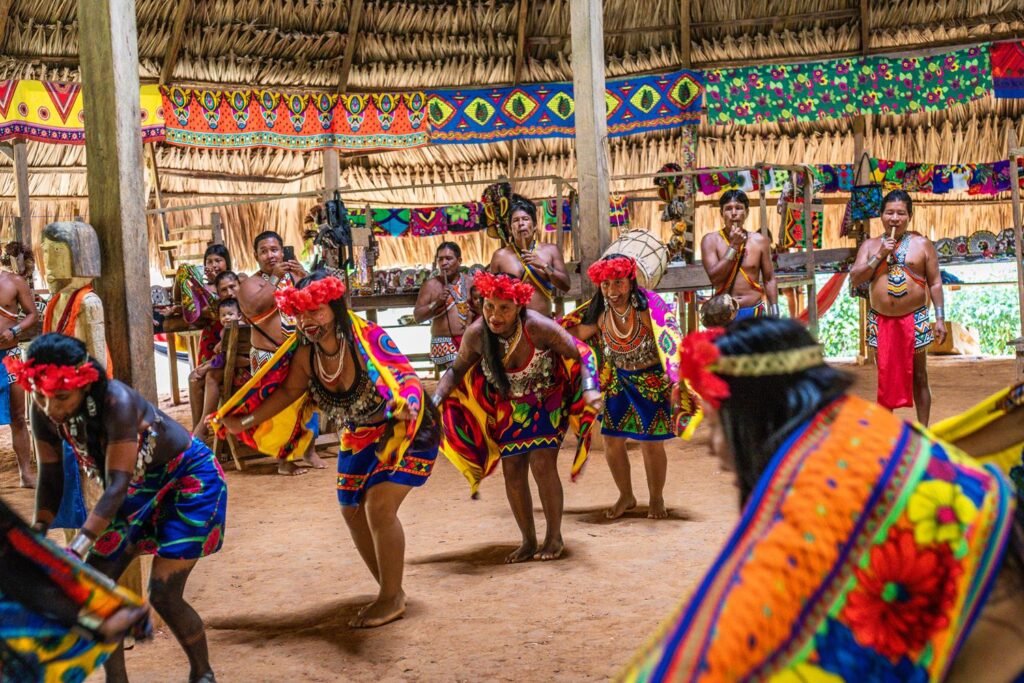
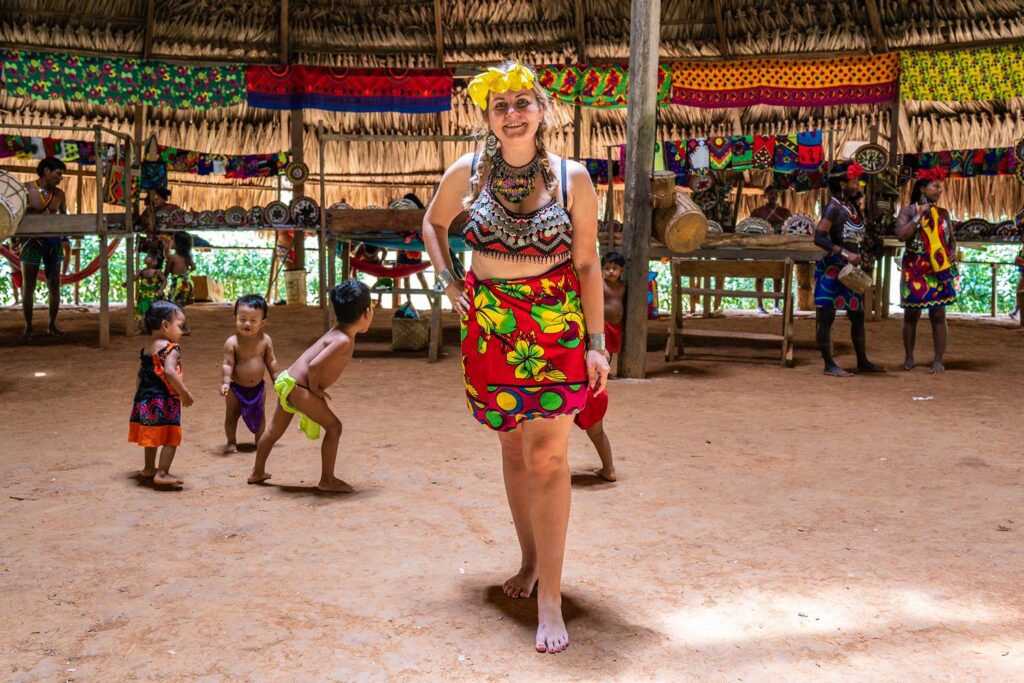
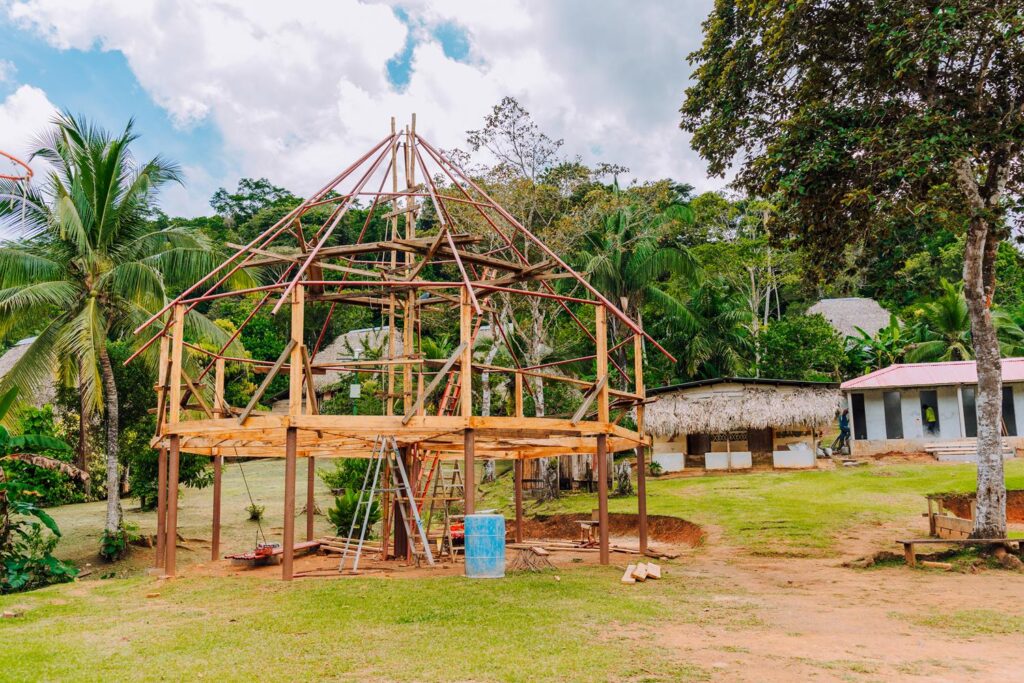
Flight to Chitre
The next day, we fly from Panama City to Chitre. The small plane fits 20 lucky passengers, and visibility is perfect: we fly over the Panama Canal, head west, and admire rainforests and the blue Pacific coast. My goal is to explore Panama’s traditions in the Herrera and Los Santos provinces.
Accommodation for the next few days: Hotel Pedasí Nature Paradise
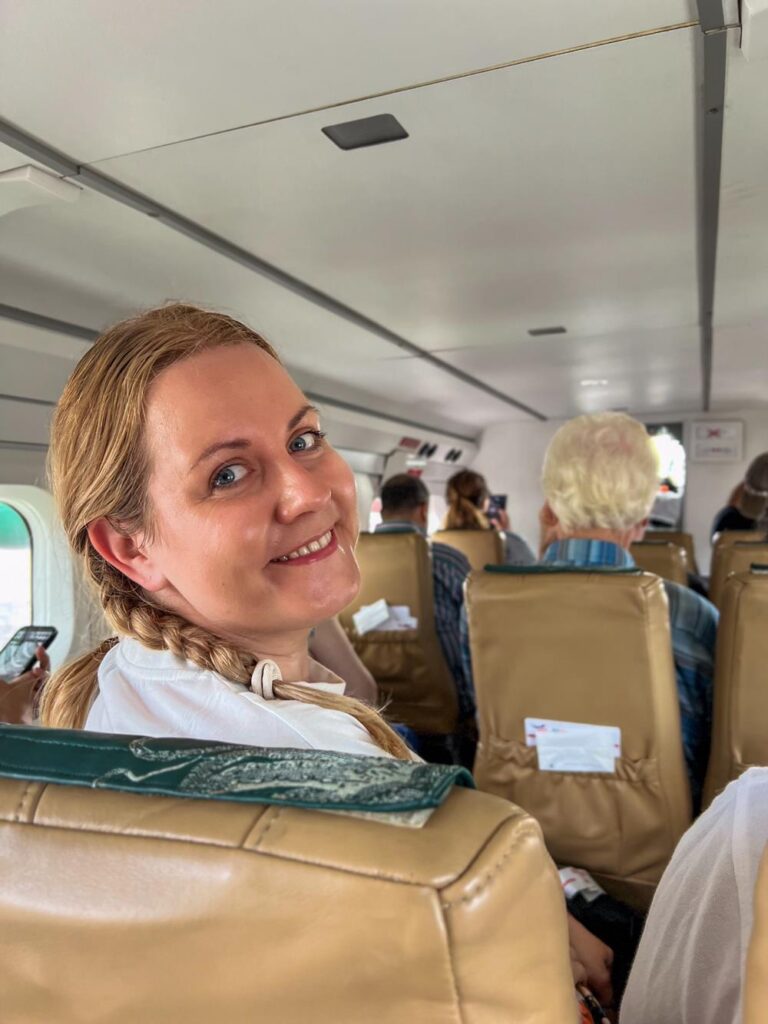
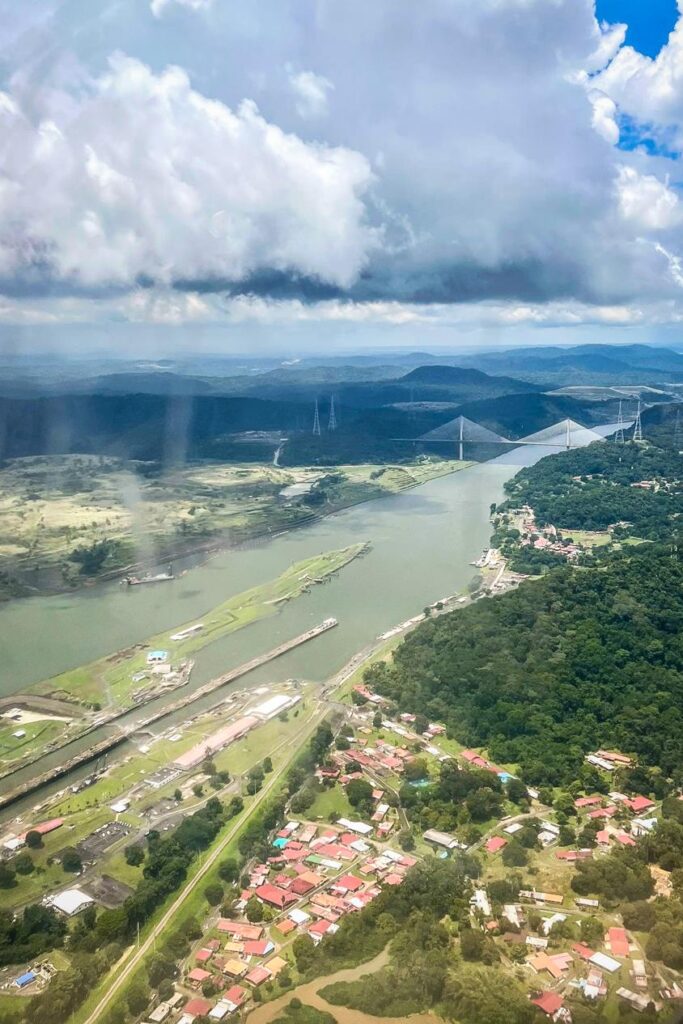
Traditions in Panama
Along with my group, I visit a renowned maker of colorful masks for folk dancers. Every year, José González and his wife create hundreds of masks for various celebrations nationwide, each one unique. The masks are also used during Corpus Christi processions, quite different from those in Poland. We compare our traditions related to this holiday with Panamanians. Although separated by 10,000 kilometers, they have beautiful, colorful carpets similar to those in Spycimierz, Łódź Province, in Poland. However, the procession here takes the form of a dance. Panama’s Corpus Christi celebrations commemorate the Last Supper of Jesus, and one of the most intriguing elements is the “dance of the devils.” During the dance, devils try to claim human souls, but Archangel Michael stands to fight them off.
In the same area, I see how traditional clay pots are made, how drums are crafted, and how bread is baked. I meet many people who are passionate about passing their traditions down through generations. This is not easy nowadays, especially as more people choose to move to the capital each year. That day, in addition to Panamanian cuisine, I try fresh sugarcane juice, almost a guarantee of a stomach upset, but it’s part of the experience.

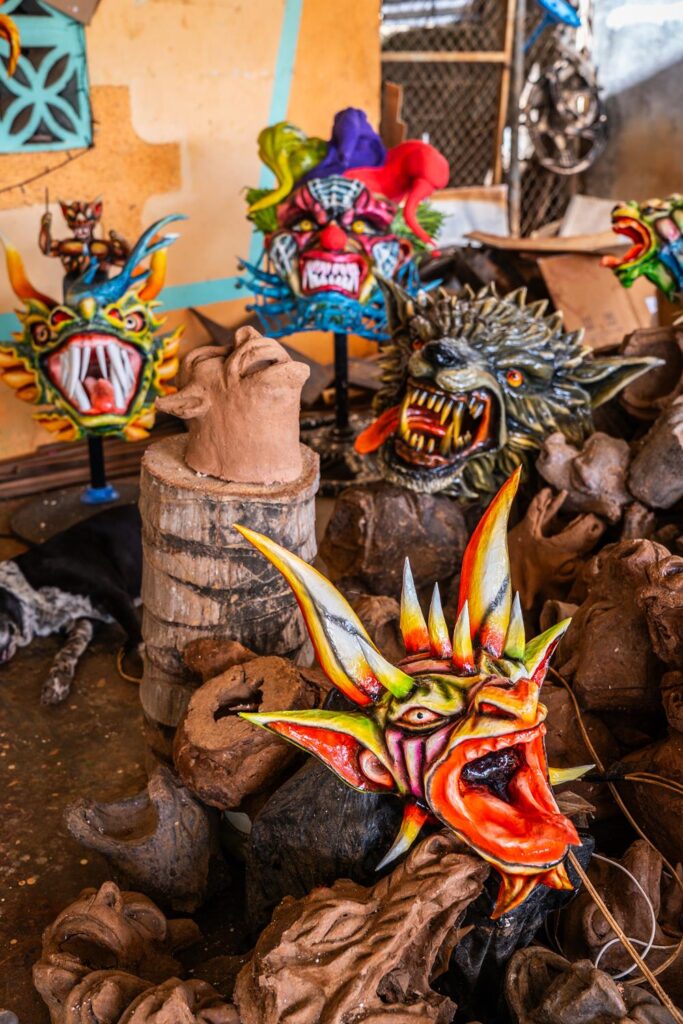
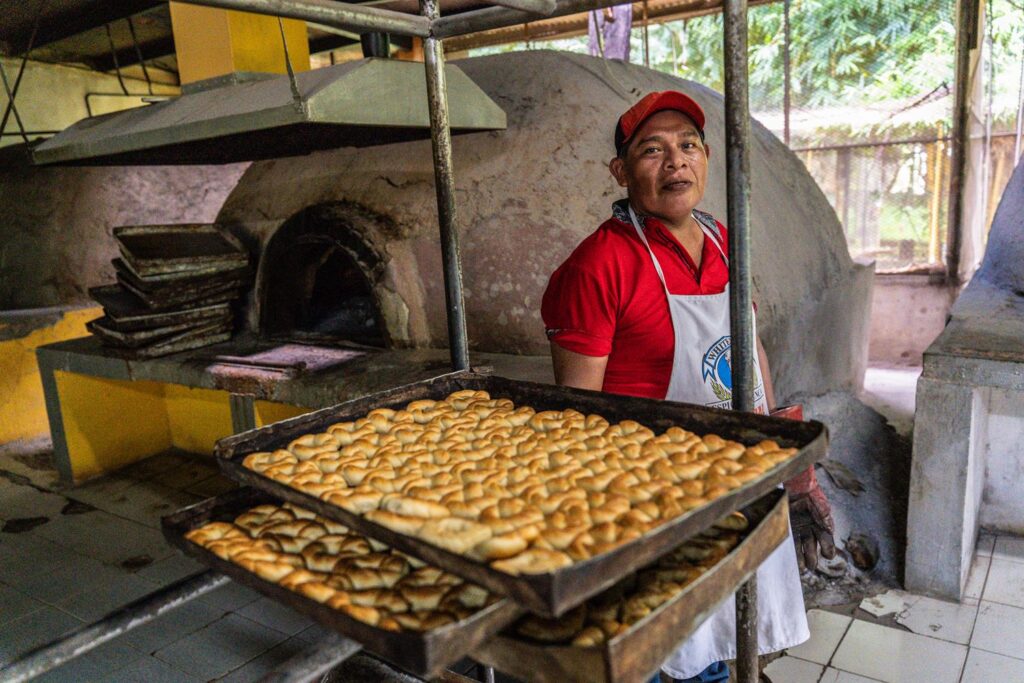
Isla Iguana
We sail to two very different islands: Isla Iguana and Isla Canas. The first island is a protected area, home to iguanas, as the name suggests, but they aren’t the only residents. There are also crabs and thousands of frigate birds that nest here. With coral reefs and hundreds of colorful fish, we have a paradise-like island, which is completely empty at this time of year. Swimming in the warm ocean is the perfect end to the trip.
More on this in the post: Isla Iguana – Panama’s Tropical Oasis
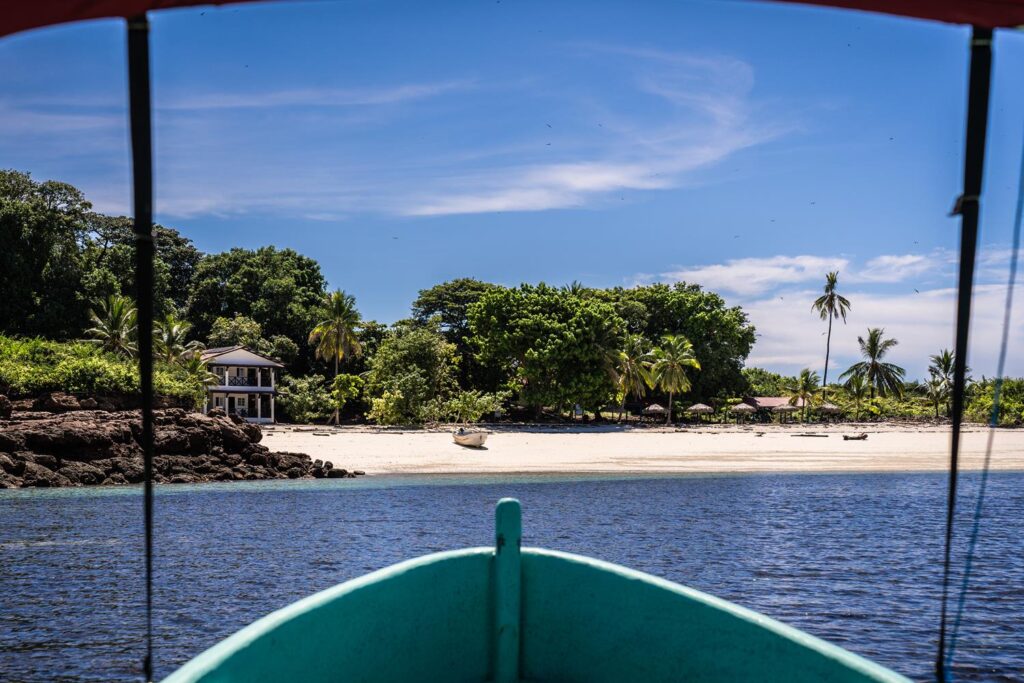
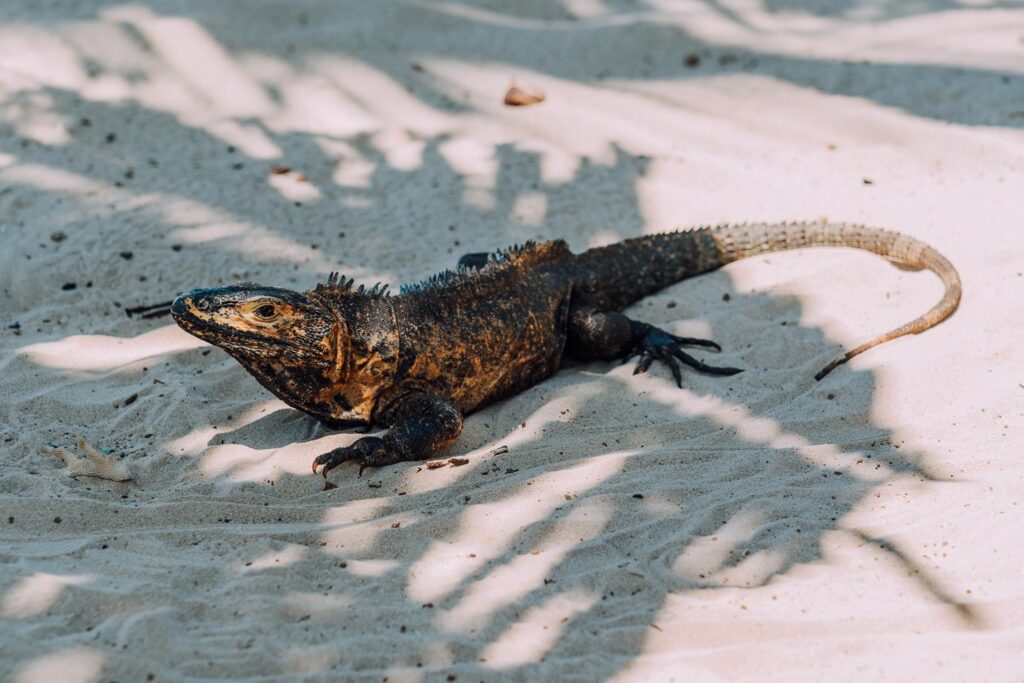
Isla Canas
The white sand of Isla Iguana provides a stark contrast to the dark shores of Isla Canas. Surrounded on one side by mangrove forests, the island is home to a few hundred people. At a local bar, I have the chance to meet some of them, and in the evening, we’re scheduled for dinner together. However, I have other plans first: kayaking among the mangroves. All around, only the sounds of nature can be heard – birds singing and the gentle splash of paddles. I admire the incredible formations of trees and roots that create a true labyrinth, trying not to think about what wild animals might be swimming nearby; Panama’s nature is wild, and crocodiles and snakes could be anywhere.
Isla Canas is one of the nesting grounds for sea turtles. That evening, we plan to witness the baby turtles’ journey to the ocean. We can see this because, like in the Embera village, tourism brings income to the island’s residents. Thanks to this, they protect the eggs and work to ensure as many turtles as possible reach the ocean.
After dinner, which ended with dancing, we return by boat to the mainland. And although I saw many extraordinary things in Panama, one of my fondest memories will be the starlit sky over Isla Canas.
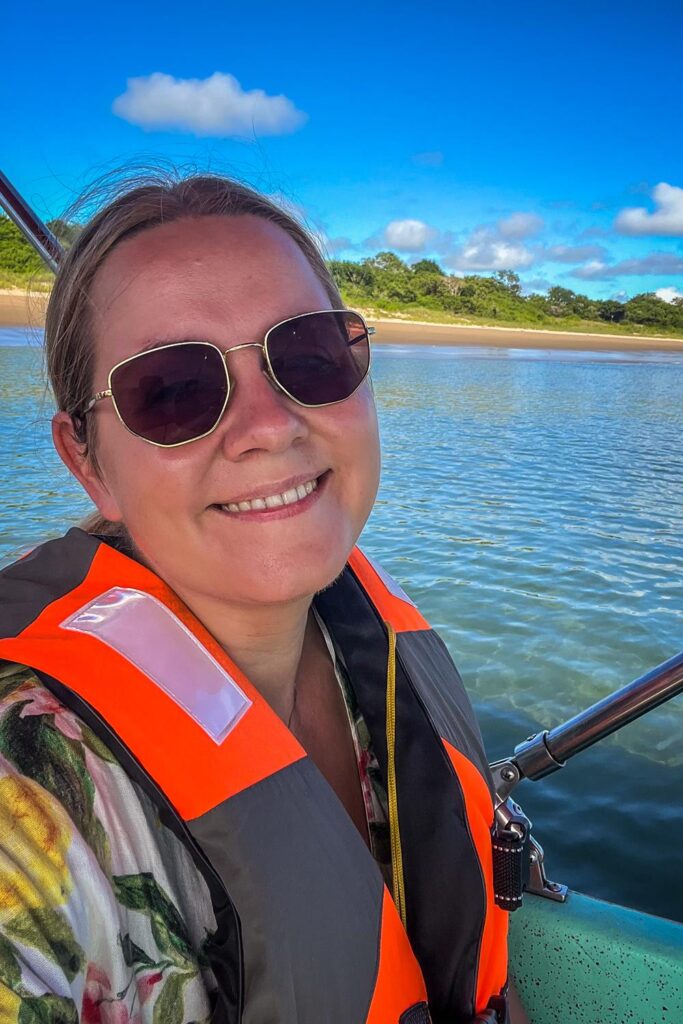
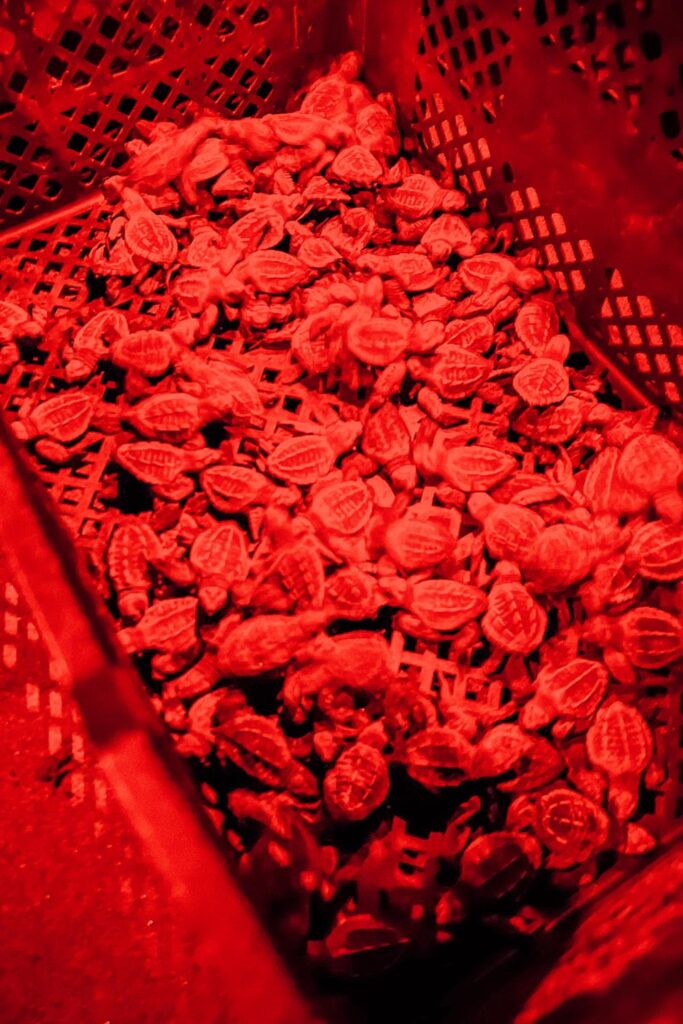
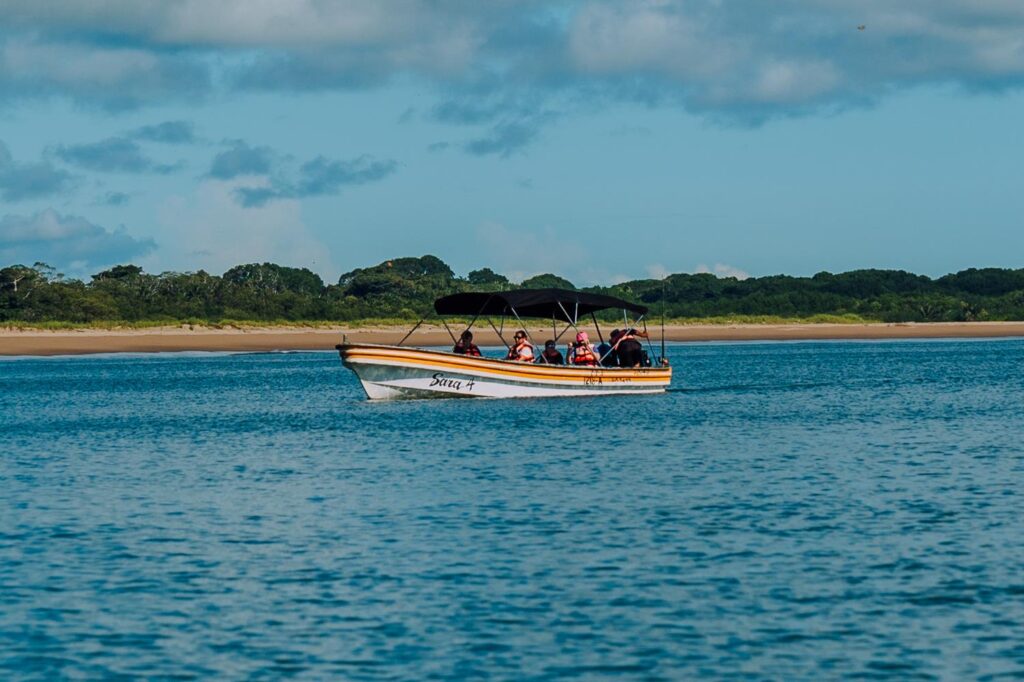
Visit to Finca Pamel Farm
Panama is a country where traditions are deeply rooted in everyday life, and folk culture is still alive. To learn more, we visited Finca Pamel – a farm where you can stay overnight, milk a cow, enjoy local delicacies, and see how Panama’s traditional hats and shoes are made (and take them home afterward). Another example of Panamanian traditions is the pollera – a traditional outfit that has symbolized Panamanian identity for centuries. This richly adorned, hand-embroidered dress is worn during important holidays and ceremonies.
I had the chance to experience this tradition myself when I was invited to wear a pollera and prepare for one of the local celebrations. Putting on this outfit was like a ritual – each layer of fabric and gold decoration had its place and symbolism, and the final effect was stunning. In short, a woman who usually wears simple clothes transforms into a princess full of grace and elegance.
Link to accommodation at the farm.

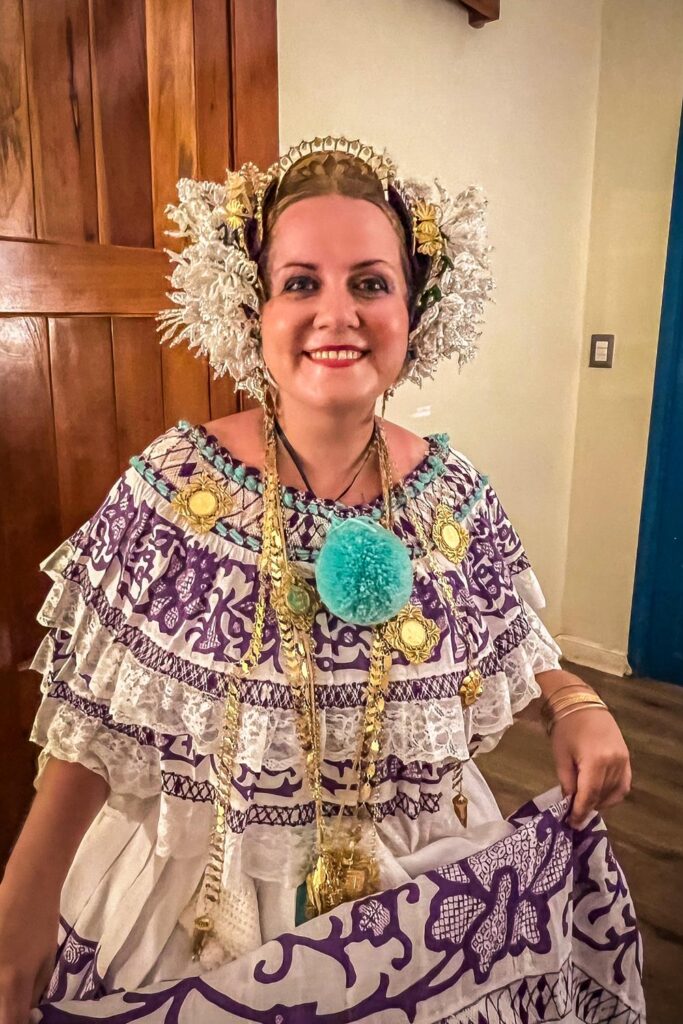
Junta de Embarra
On my last day in Pedasi, I had the opportunity to participate in a house-building activity known as “junta de embarra.” The house walls are made from a mixture of earth, mud, and straw. It sounded unbelievable to me, like a relic from the past, but once there, I realized it was more than just a building technique. Traditionally, house-building is an event that brings the whole local community together and becomes a reason for celebration. Everyone has their task – back then, men prepared the building materials, women handled the cooking of traditional dishes, and children learned the building techniques from their elders. On this day, in addition to hard work, there was no shortage of a typical Panamanian fiesta, because here, you simply can’t live without one. An orchestra played, and all the participants danced to the rhythm of local music.
Panama City
It was time to return to the capital. There are more skyscrapers here than in Miami, and the rainforest literally meets the concrete jungle of skyscrapers. Additionally, the historic, UNESCO-listed Casco Viejo adds incredible charm to the city. Some people love this city for its unique atmosphere, while others, overwhelmed by the fast pace of life, escape as soon as they can, looking for peace in more picturesque parts of the country. Either way, Panama City has something that makes it unforgettable.
The country has 4.5 million residents, with 2 million living in the city itself. It’s no surprise that if you drive through the city during rush hour, there’s a high chance of getting stuck in a massive traffic jam. That’s why, on the roads at more critical points, you can buy drinks and snacks from street vendors.
It’s impossible to mention Panama without talking about the Panama Canal, which not only connects the oceans but also shapes the life of the entire country. Since its opening in 1914, the canal has revolutionized global trade, shortening maritime trade routes and contributing to the economic development of this small yet strategically located country. It was under U.S. control for many years but became a symbol of the country’s sovereignty in 1999 when it was placed under Panamanian jurisdiction.
For two weeks, Panama revealed its stories to me. And during my last walk through Casco Viejo, it revealed one final story. I was accompanied by Melquiades, who was born in the capital. He spoke about history, the construction of the Panama Canal, everyday life, and the U.S. invasion of Panama. He recalled that at the time, he lived with his sister in Miami:
We watched the entire invasion live on television. It was probably the most terrifying night of my life because my parents were here in Panama. Near our home were Noriega’s barracks, and that area was heavily bombed. We didn’t know if our parents were alive because American forces had cut off all forms of communication. My father worked at the country’s first television station, so when American forces arrived, they took the entire staff from that station to a nearby hotel. My mother was alone at home, and they didn’t see each other for a whole week. Only after about a week did we finally find out that they were safe.
The topic of the invasion remains unresolved, primarily because there was never, and still isn’t, an official list of civilian casualties. The number of people who died during the invasion is still unknown to this day. As a result, many Panamanians continue to seek compensation for the loss of loved ones, as well as for destroyed homes and property. This is another, sadder, less touristy side of this country.
See also: What to See in Panama City? Top Sights and Attractions
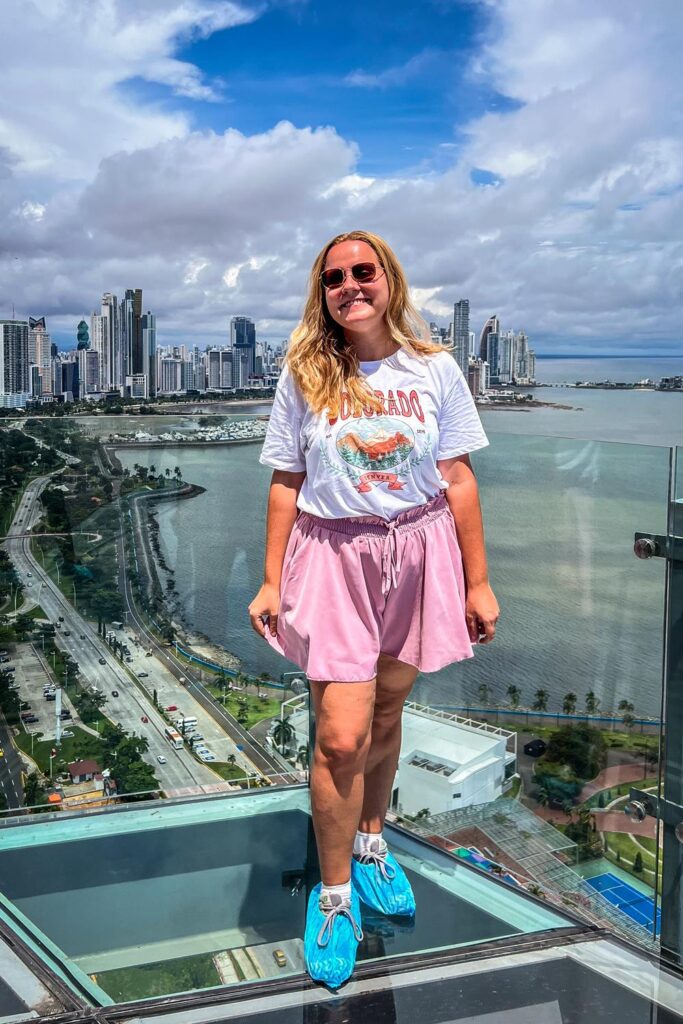
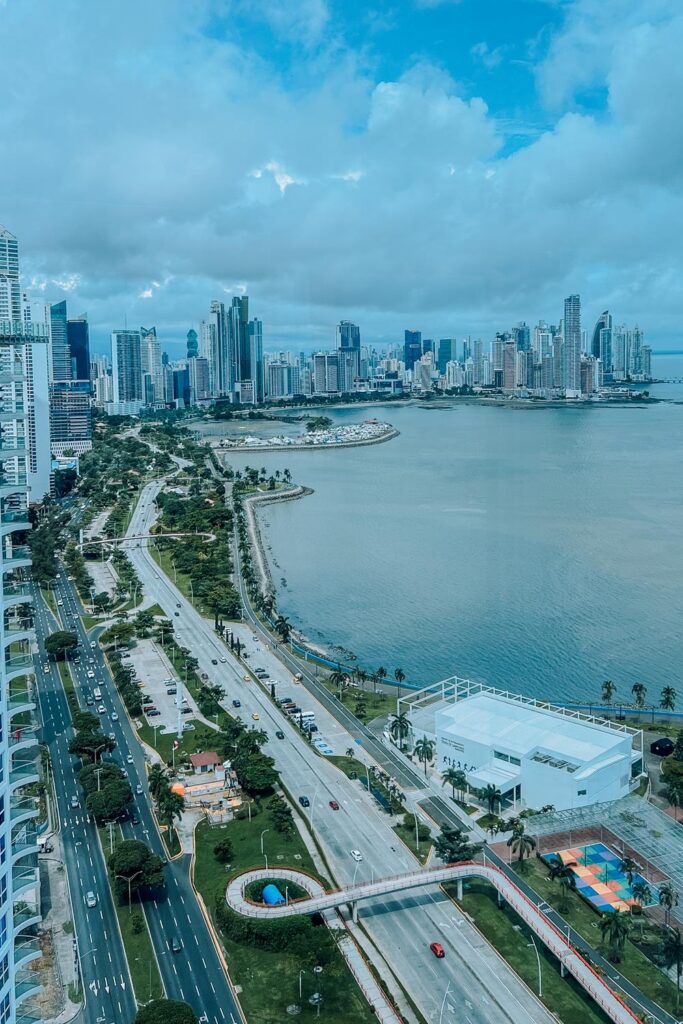
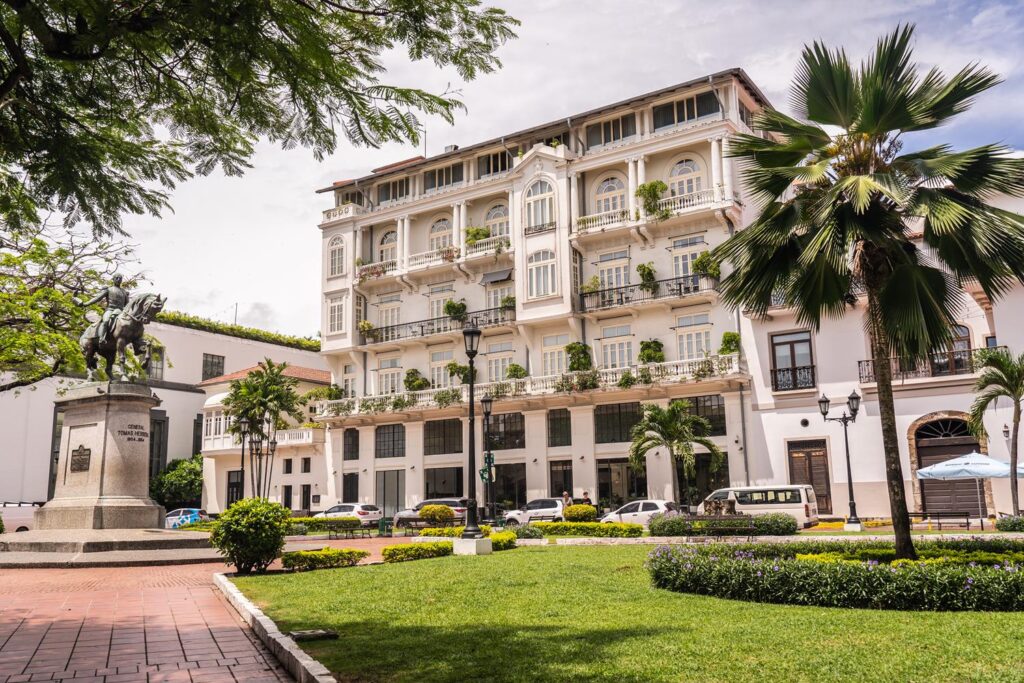
Reflecting on all this, on the way to the airport, I take one last look at the traffic-clogged city during rush hour. Although this year I visited far more demanding destinations, such as Pakistan, I didn’t expect Panama to so profoundly change my perspective on the world around me and make me so eager to return for more.
Special thanks to the Panama Tourism Authority & Adventure Travel Trade Association for inviting me to Panama.